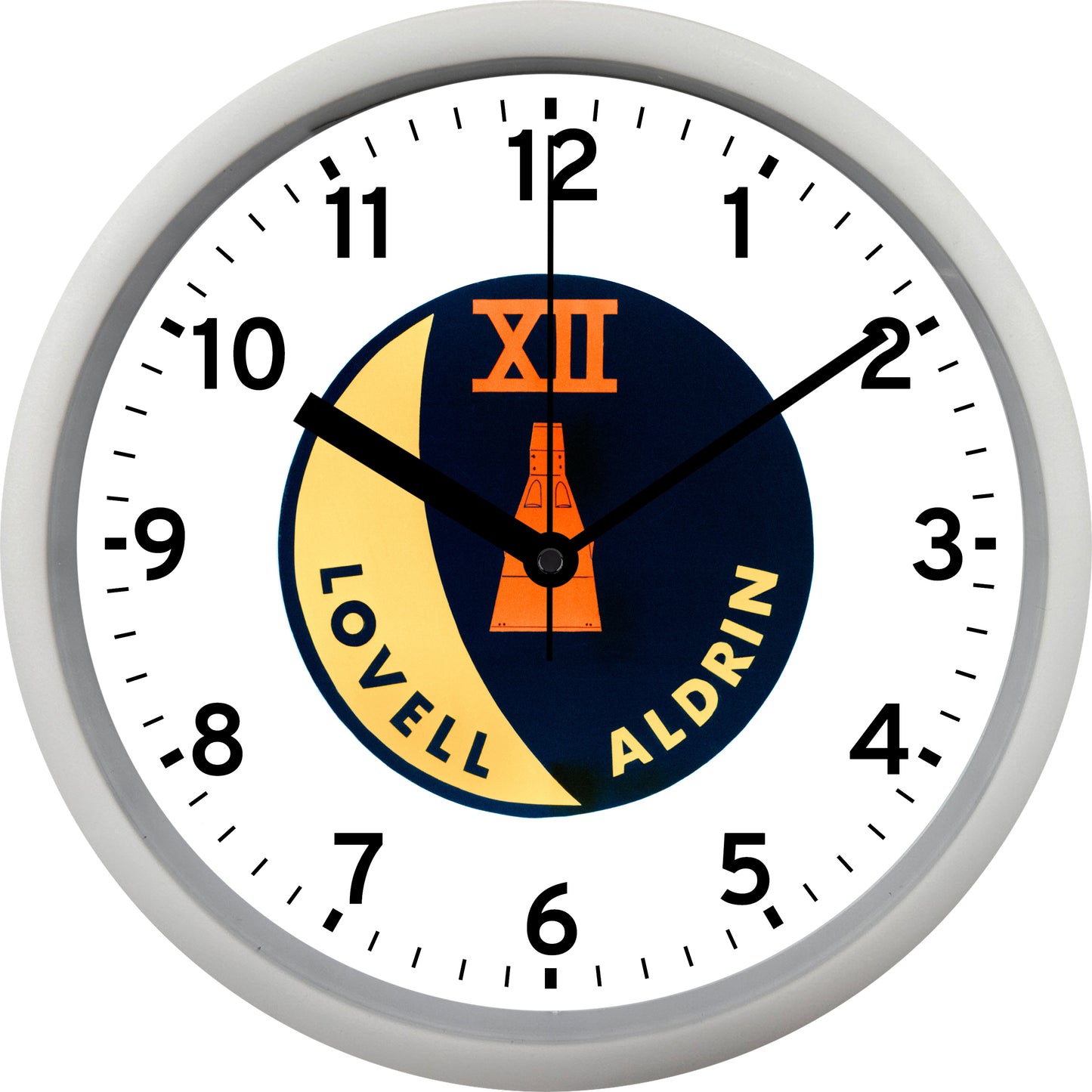Mainstays
NASA Gemini 12 - XII Wall Clock
NASA Gemini 12 - XII Wall Clock
Item Number/SKU:
SKU:NASA-23-WH
Couldn't load pickup availability
NASA "National Aeronautics Space & Administration" Gemini 12 - XII Wall Clock
Gemini 12 - XII "GLV-12 12567" - November 11, 1966 - November 15, 1966
James A. Lovell & Edwin "Buzz" Aldrin
Final Gemini flight. Rendezvoused and docked manually with its target Agena and kept station with it during EVA. Aldrin set an EVA record of 5 hours and 30 minutes for one space walk and two stand-up exercises, and demonstrated solutions to previous EVA problems. 59 orbits completed
Project Gemini - 1961-1966:
Based on studies to grow the Mercury spacecraft capabilities to long-duration flights, developing space rendezvous techniques, and precision Earth landing, Project Gemini was started as a two-man program in 1962 to overcome the Soviets' lead and to support the Apollo manned lunar landing program, adding extravehicular activity (EVA) and rendezvous and docking to its objectives. The first manned Gemini flight, Gemini 3, was flown by Gus Grissom and John Young on March 23, 1965. Nine missions followed in 1965 and 1966, demonstrating an endurance mission of nearly fourteen days, rendezvous, docking, and practical EVA, and gathering medical data on the effects of weightlessness on humans.
Under the direction of Soviet Premier Nikita Khrushchev, the USSR competed with Gemini by converting their Vostok spacecraft into a two- or three-man Voskhod. They succeeded in launching two manned flights before Gemini's first flight, achieving a three-cosmonaut flight in 1963 and the first EVA in 1964. After this, the program was canceled, and Gemini caught up while spacecraft designer Sergei Korolev developed the Soyuz spacecraft, their answer to Apollo.


